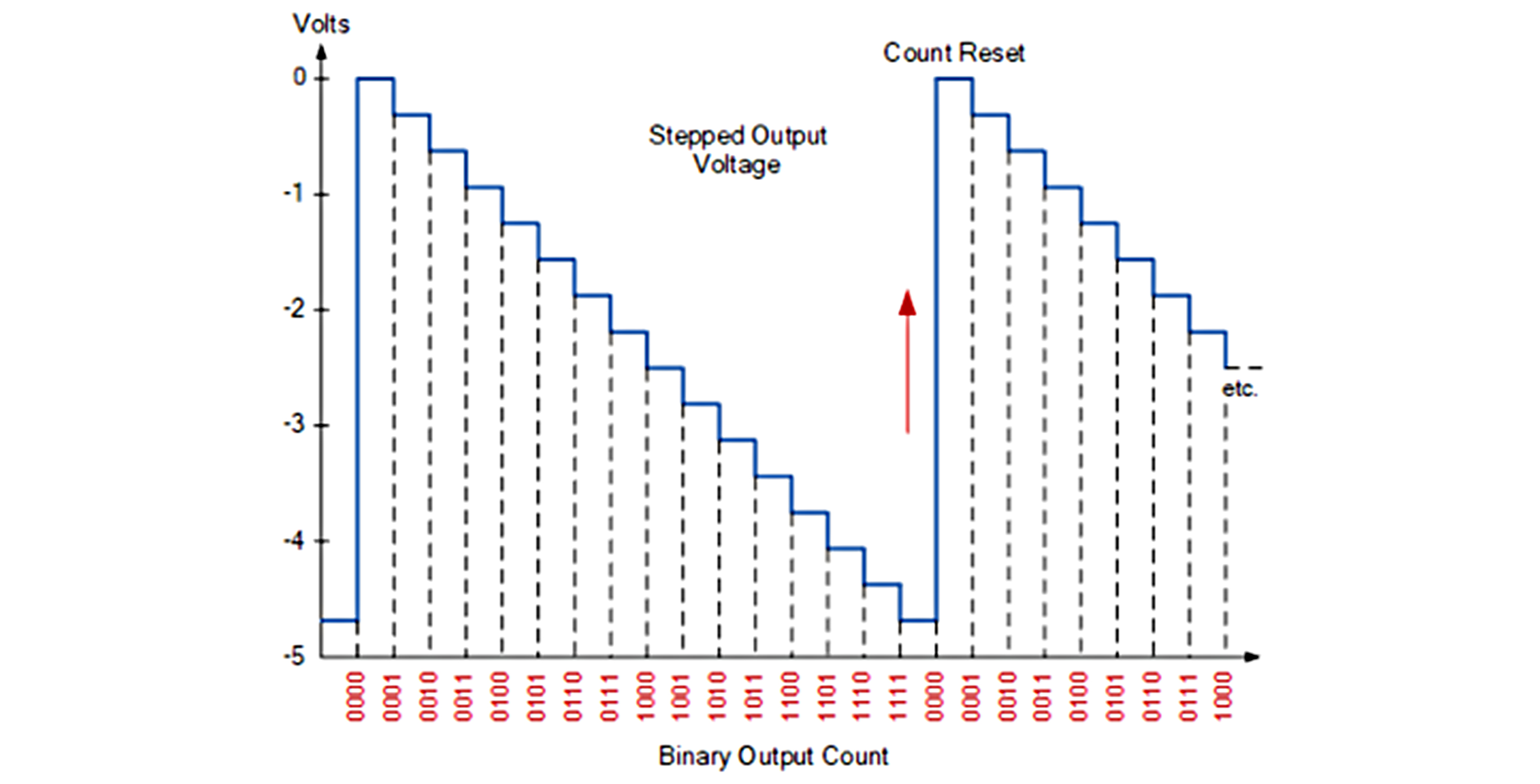Design principles of digital-to-analog conversion in information transformation
DOI:
https://doi.org/10.15587/2706-5448.2022.267770Keywords:
digital-to-analog converter, analog transmission, digital transmission, measurement result, microcircuitAbstract
The object of study is digital-to-analog converter (DAC). The meaning of DAC, their design and control of various types of switches, as well as some logic elements that can act as a switch, as well as the principles of DAC operation based on various series, microcircuits were considered. The resistance of a 4-bit DAC circuit was calculated and, accordingly, the change in the output voltage when applying the corresponding combined input voltage was studied, and a timing diagram was accordingly developed. Using 1-state and toggle physical switches, schematics are established and side effects are learned. Ladder circuit established using R–2R type dividers as voltage dividers. The object of the research is to find and learn the most technologically advantageous concept in order to provide good communication between all equipments by transferring information from digital to analog in the industrial field as well as in other areas where automation is used. One of the biggest challenges in this research is to determine the smallest binary values. Before the use of electronic logic elements such as counters, bistable physical switches were used to create a break or connect state in the circuit, which caused additional energy and time loss or abrasion because of large voltages occur across the switches. The biggest issue was that when manufacturing integrated digital-to-analog converters, producing the right resistors with very different values is really difficult. As a result of this research, it is seen that the use of physical switches is unnecessary as a demand of today's modern technology, and integrated microcircuits are good to replace them. The programming of digital-to-analog converters on programmable hardware devices such as Arduino and Raspberry Pi were mentioned. If to predict the near future, digital-to-analog transmission will be realized only by only using logic elements, and this will change both their energy efficiency and size for the better.
Supporting Agency
- Presentation of research in the form of publication through financial support in the form of a grant from SUES (Support to Ukrainian Editorial Staff).
References
- Tietze, U., Schenk, C., Gamm, E. (2008). Electronic Circuits. doi: https://doi.org/10.1007/978-3-540-78655-9
- Pashayev, A. M., Hasanov, A. R., Iskandarov, I. A., Abdurahimov, F. A. (2014). Fundamentals of electronic devices 3 (Digital devices). Baku: Editorial office «Maarif», 328.
- Rustamova, D. F., Mehdiyeva, A. M. (2021). Features of Digital Processing of Non-stationary Processes in Measurement and Control. Lecture Notes in Networks and Systems. Cham: Springer, 592–598. doi: https://doi.org/10.1007/978-3-030-77448-6_58
- Wang, Guo, Zhou, Wu, Luan, Liu, Ding, Wu, Liu. (2019). A 3GS/s 12-bit Current-Steering Digital-to-Analog Converter (DAC) in 55 nm CMOS Technology. Electronics, 8 (4), 464. doi: https://doi.org/10.3390/electronics8040464
- Majidov, S. (2012). Electronics 2. Baku: Editorial office «Elm», 198.
- Agayev, F. H., Mehdiyeva, A. M. (2017). Corrective filtering in electrical signal conversion and digital processing. Baku: Azernashr, 168.
- Digital-to-Analog and Analog-to-Digital Converters. Available at: https://www.ee.iitb.ac.in/~sequel/ee101/mc_dac_1.pdf
- Humbatov, R. T. (2002). Electronics II. Baku: Editorial office «Maarif», 284.
- Scherz, P., Monk, S. (2000). Practical Electronics for Inventors. MC Graw Hill, 1056. Available at: http://instrumentacion.qi.fcen.uba.ar/libro/Scherz.pdf
- Horowitz, P., Hill, W. (2015). The Art of Electronics. New York: Cambridge University Press, 1224.
- R-2R DAC. Electronics-tutorials. Available at: https://www.electronics-tutorials.ws/combination/r-2r-dac.html
- Maini, A. K. (2007). Digital Electronics Principles, Devices and Applications. Wiley, 741. Available at: https://www.shahucollegelatur.org.in/Department/Studymaterial/sci/it/BCA/FY/digielec.pdf
- Bryant, J., Kester, W. Analog-Digital Conversion. Fundamentals of sampled data systems, 120. Available at: https://www.analog.com/media/en/training-seminars/design-handbooks/Data-Conversion-Handbook/Chapter2.pdf

Downloads
Published
How to Cite
Issue
Section
License
Copyright (c) 2022 Ferid Agayev, Javid Karimov, Almaz Mehdiyeva, Sevinj Quliyeva

This work is licensed under a Creative Commons Attribution 4.0 International License.
The consolidation and conditions for the transfer of copyright (identification of authorship) is carried out in the License Agreement. In particular, the authors reserve the right to the authorship of their manuscript and transfer the first publication of this work to the journal under the terms of the Creative Commons CC BY license. At the same time, they have the right to conclude on their own additional agreements concerning the non-exclusive distribution of the work in the form in which it was published by this journal, but provided that the link to the first publication of the article in this journal is preserved.







